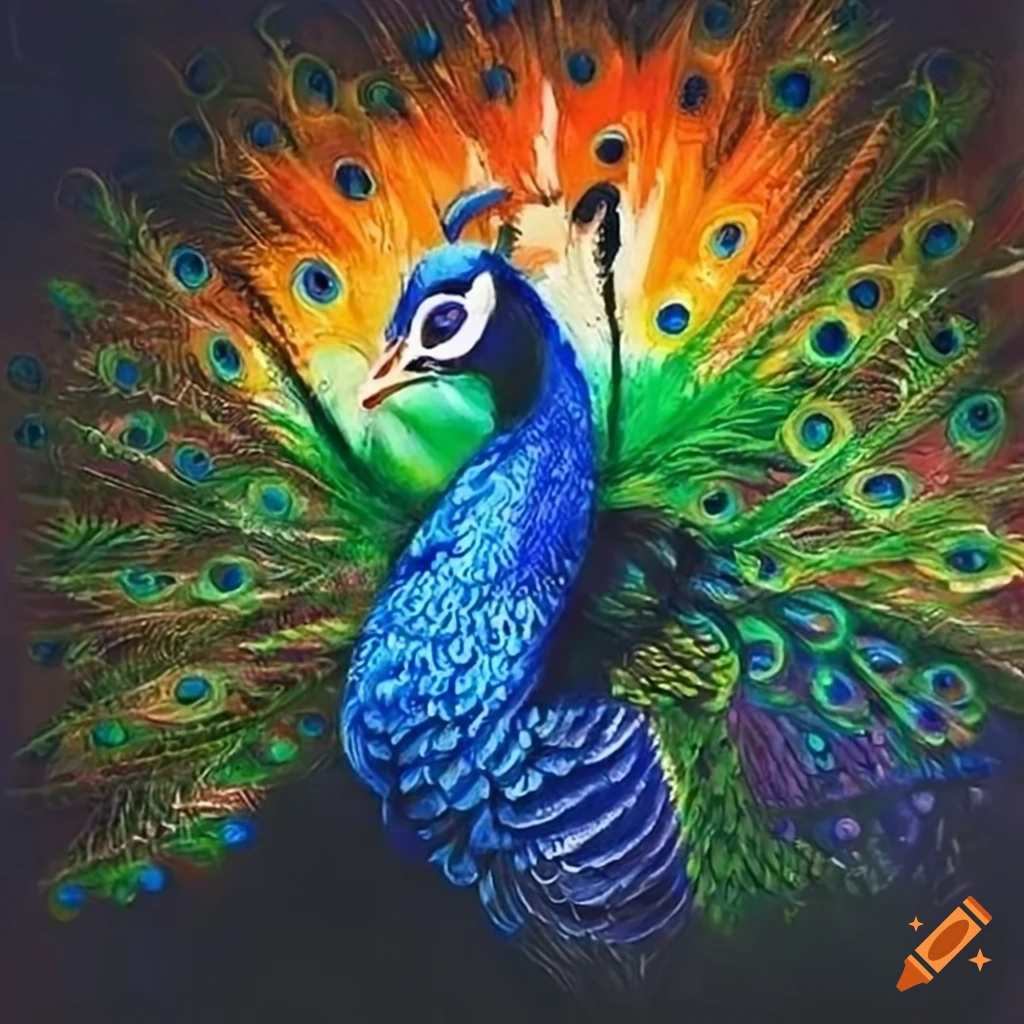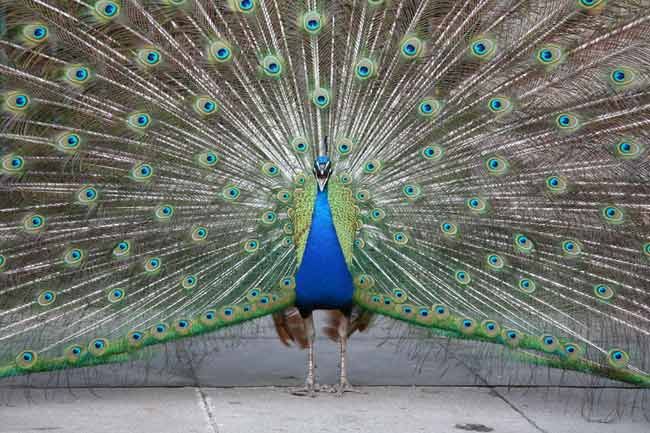Use English language, and raw data
The peacock, with its mesmerizing plumage and elaborate courtship displays, has captivated humans for centuries. Its dazzling array of colors has inspired artists, poets, and philosophers alike, leading many to wonder: What is the true color of a peacock? This seemingly simple question quickly unravels into a fascinating exploration of biology, physics, and the very nature of perception. At first glance, the answer seems straightforward. We vividly recall the vibrant blues, greens, and golds that adorn the peacock’s tail feathers. However, a closer look reveals a deeper truth: the peacock’s colors are not simply pigment-based. Instead, they are a result of a stunning interplay between light, structure, and our own visual system.
The Vibrant Hues of the Peacock’s Plumage

Peacocks are known for their striking display of colors, particularly the male peafowl with its long, iridescent tail feathers. These feathers appear to shimmer and change colors as the peacock moves, creating a mesmerizing effect. But what exactly gives rise to these hues? To understand this, we must first delve into the fundamental principles of color perception.
In the world of physics, color arises from the interaction of light with matter. When light hits an object, some wavelengths are absorbed, while others are reflected or scattered. The specific wavelengths that are reflected reach our eyes and are interpreted by our brains as different colors. This process is known as color vision.
Traditionally, pigments have been thought of as the primary source of color in organisms. Pigments are chemical compounds that absorb certain wavelengths of light and reflect others, giving rise to specific hues. For instance, chlorophyll – the green pigment found in plants – absorbs all colors except green, which is reflected back to our eyes. This is why plants appear green to us.
Understanding Peacock Colors: A Scientific Explanation

At first glance, it may seem logical to assume that the peacock’s vibrant colors are a result of pigments. After all, we commonly associate colors with pigments in everyday life – from the paints used to create art to the dyes used in clothing. However, when it comes to the peacock’s feathers, a different mechanism is at play: structural coloration.
Structural coloration is a phenomenon where an organism produces color not through pigments, but rather through the physical structure of its tissues or cells. In the case of peacocks, their feathers are uniquely structured to produce stunning hues when hit by light.
The Role of Light and Optics in Peacock Feather Display

To understand how structural coloration gives rise to the peacock’s vibrant colors, we must delve into the physics of light and optics. The peacock’s feathers are made up of thousands of microscopic structures called “barbules.” These barbules are arranged in a specific pattern, forming a “photonic crystal.”
When light hits these photonic crystals, it is diffracted and reflected in a way that creates interference patterns. This process is similar to what happens when light hits a soap bubble, creating a rainbow of colors. However, in the case of the peacock’s feathers, the structures are much more complex and organized, resulting in a more vivid display of color.
The angle at which light hits the feather also plays a crucial role in the colors we see. As the peacock moves and its feathers shift, the angle of light hitting the photonic crystals changes, resulting in different colors being reflected. This is what gives the impression of shimmering or changing colors.
Beyond Blue and Green: Exploring the Peacock’s Full Color Palette

While the blues and greens of the peacock’s feathers are the most well-known, they are not the only colors present. In fact, a closer look at the feathers reveals a wide range of hues, including golds, purples, and even reds. This is due to the intricate structure of the photonic crystals, which can produce a range of colors depending on the angle of light and the spacing of the barbules.
But what about the elusive white color that we see on some peacocks? This is also a result of structural coloration. The white patches on a peacock’s feathers are created when all wavelengths of light are reflected back rather than being absorbed or diffracted. This results in a pure white appearance.
The Evolutionary Significance of Peacock Coloration

The vibrant colors of the peacock serve a crucial role in its survival and reproductive success. The elaborate display of feathers is used by male peacocks during courtship to attract females. The brighter and more dazzling the colors, the greater the chances of attracting a mate.
But why do peacocks have such elaborate coloration in the first place? From an evolutionary standpoint, this is known as “sexual selection.” In many species, it is the female who is responsible for choosing a mate – often based on physical characteristics that signal good health and genetic fitness. In the case of peacocks, their colorful feathers indicate good health and strong genes, making them an attractive choice for reproduction.
The Cultural and Symbolic Meanings Associated with Peacock Colors
The peacock’s striking colors and patterns have not only captured the attention of scientists but also hold cultural and symbolic significance in human society. In ancient Greek and Roman mythology, the peacock was associated with the goddess Hera and was seen as a symbol of immortality and resurrection. In Hinduism, the peacock is associated with the deity Krishna and represents beauty, knowledge, and divine protection.
In many cultures, the peacock’s feathers have been used as decorative elements in artwork and fashion, symbolizing beauty, royalty, and opulence. In some Eastern traditions, the peacock is seen as a symbol of good luck and prosperity.
Conclusion
The question “what is the true color of a peacock?” may seem simple at first glance, but it quickly unravels into a fascinating exploration of biology, physics, and symbolism. While we may be quick to attribute the peacock’s vibrant colors to pigments, the truth is far more complex and intriguing. The interplay between light, structure, and perception gives rise to the dazzling hues that adorn the peacock’s plumage, making it one of the most beautiful creatures in the animal kingdom. So the next time you see a peacock displaying its colorful feathers, take a moment to appreciate the intricate science and symbolism behind its true colors.
